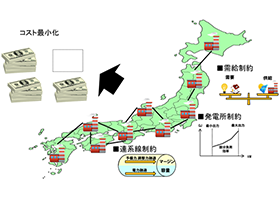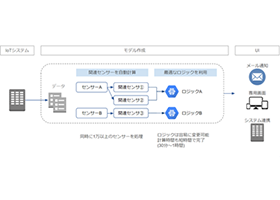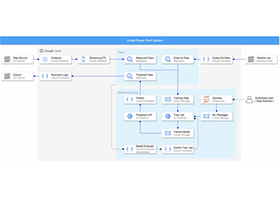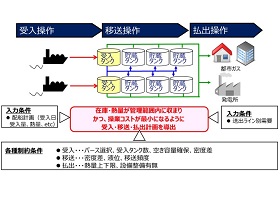Simulation, data analysis
Electricity Market Analysis Using a Nationwide Power Resources Operation Simulation Model
Overview
Osaka Gas has developed a model that simulates the optimal operation of power plants nationwide, taking into account supply and demand constraints, interconnection line constraints, and CO2 constraints. Using this model, the company analyzes the electricity market and renewable energy.
Purpose
As the uncertainty of the electricity market is growing due to the liberalization of electricity and the spread of renewable energy, it is necessary to make the right investments and procurements. The purpose of the electricity market analysis is to contribute to decision-making on investment in renewable energy and power plants and on power procurement by calculating the optimal operation for society of about 500 power plants nationwide while considering various constraints, such as securing the supply capacity of thermal power generation according to changes in demand, the limit of the amount of power that can be exchanged with interconnection lines connecting nine areas nationwide, and the upper limit of the amount of CO2 that thermal power plants can emit.

全国電源運用シミュレーションモデルの概要
Effect
By simulating the power generation patterns of power plants, it is possible to know the position of and need for each power plant; this in turn enables you to find out what the electricity market should be like in the future and what the price will be at that time. Indeed, the results of calculating the electricity market price using this model approximated the actual market price. Moreover, one issue in investing in renewable energy is that large-scale introduction of it results in output curtailment. By using this model, it is possible to objectively evaluate the appropriate amount of curtailment and its presumed amount for the future. The model is used to assist in power investment decision-making within the company.
Related contents
TAG SEARCH
- Evolving residential gas appliances
- Evolving residential gas appliances Water heaters, space heaters, dryers Cooking appliances Smart Equipment Fuel Cell systems
- Evolving commercial and industrial gas appliances
- Evolving commercial and industrial gas appliances Cogeneration (CHP) units Air conditioning systems, kitchen appliances Bio, water treatment Industrial furnaces, burners Energy management, IoT
- Enhancing the safety and economic efficiency of LNG regasification
- Enhancing the safety and economic efficiency of LNG regasification Utilization of cold energy Plant materials Power generation technology
- Developing next-generation businesses through enterprising initiatives
- Developing next-generation businesses through enterprising initiatives Materials development Measurement Simulation, data analysis Food science Material evaluation
- Contributing to conserving the environment and achieving a carbon neutral society
- Contributing to conserving the environment and achieving a carbon neutral society Methanation Hydrogen, ammonia Biogas Energy management Renewable Energy
- Technologies of Group companies
- KRI, Inc. Osaka Gas Chemicals Group OGIS-RI Group




